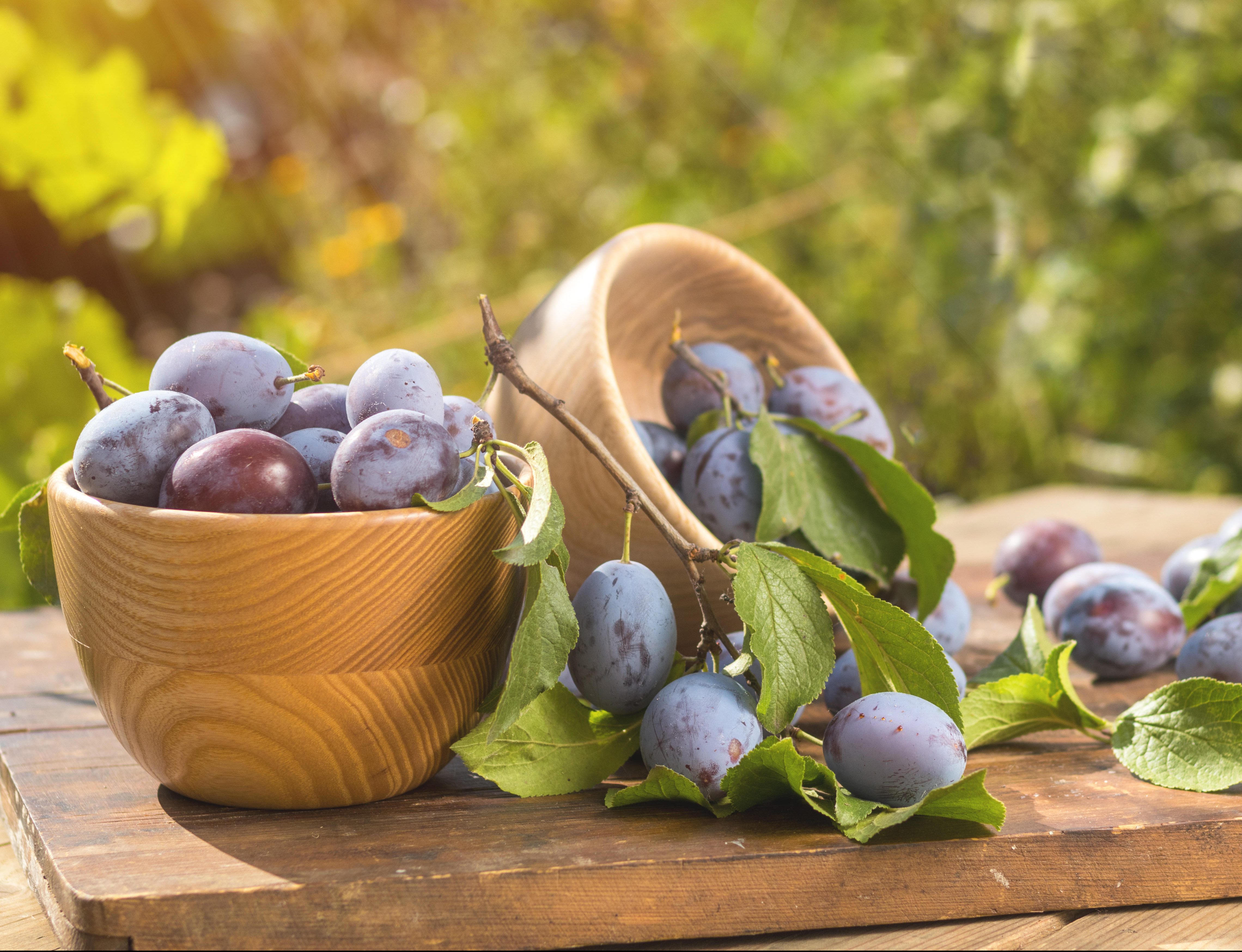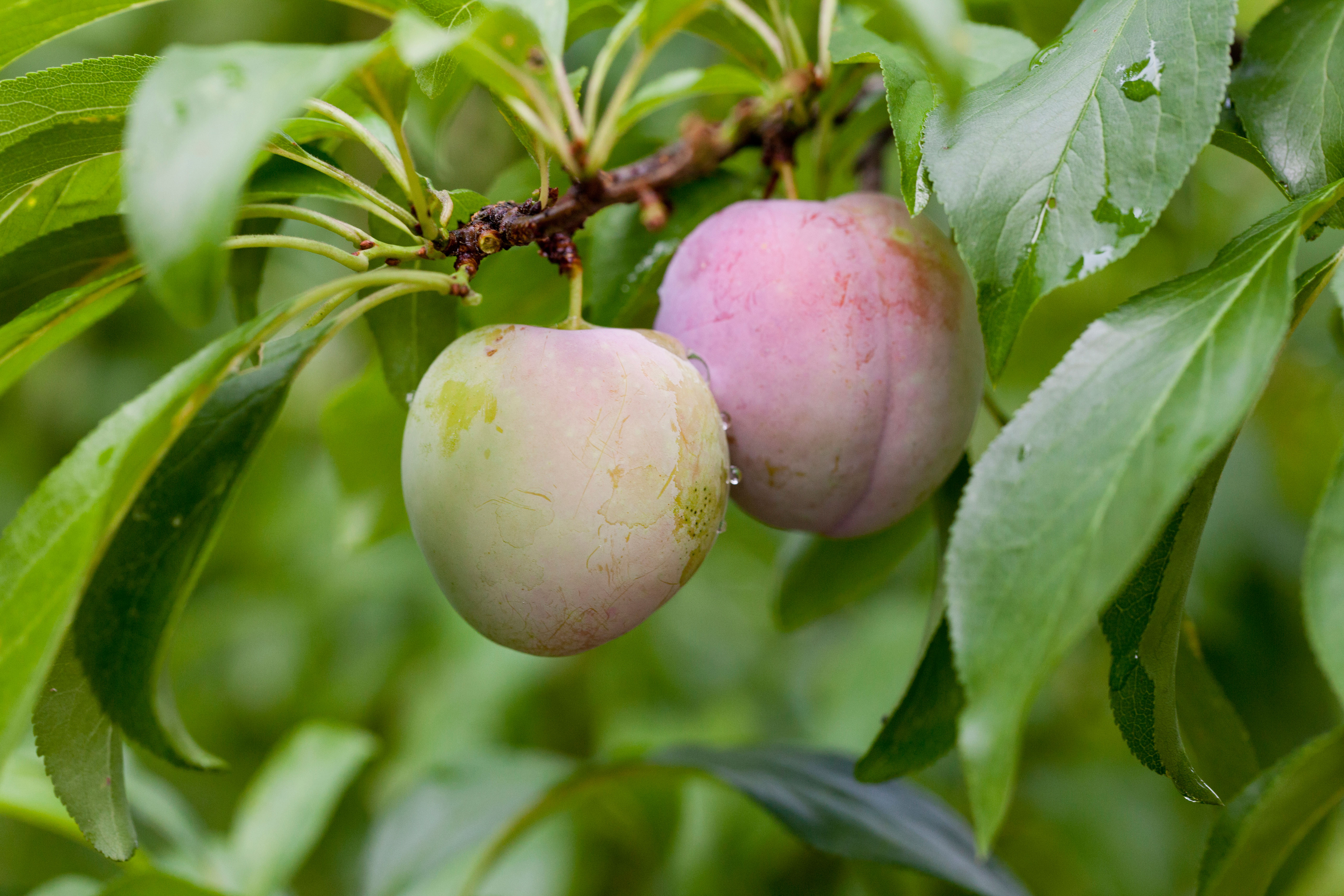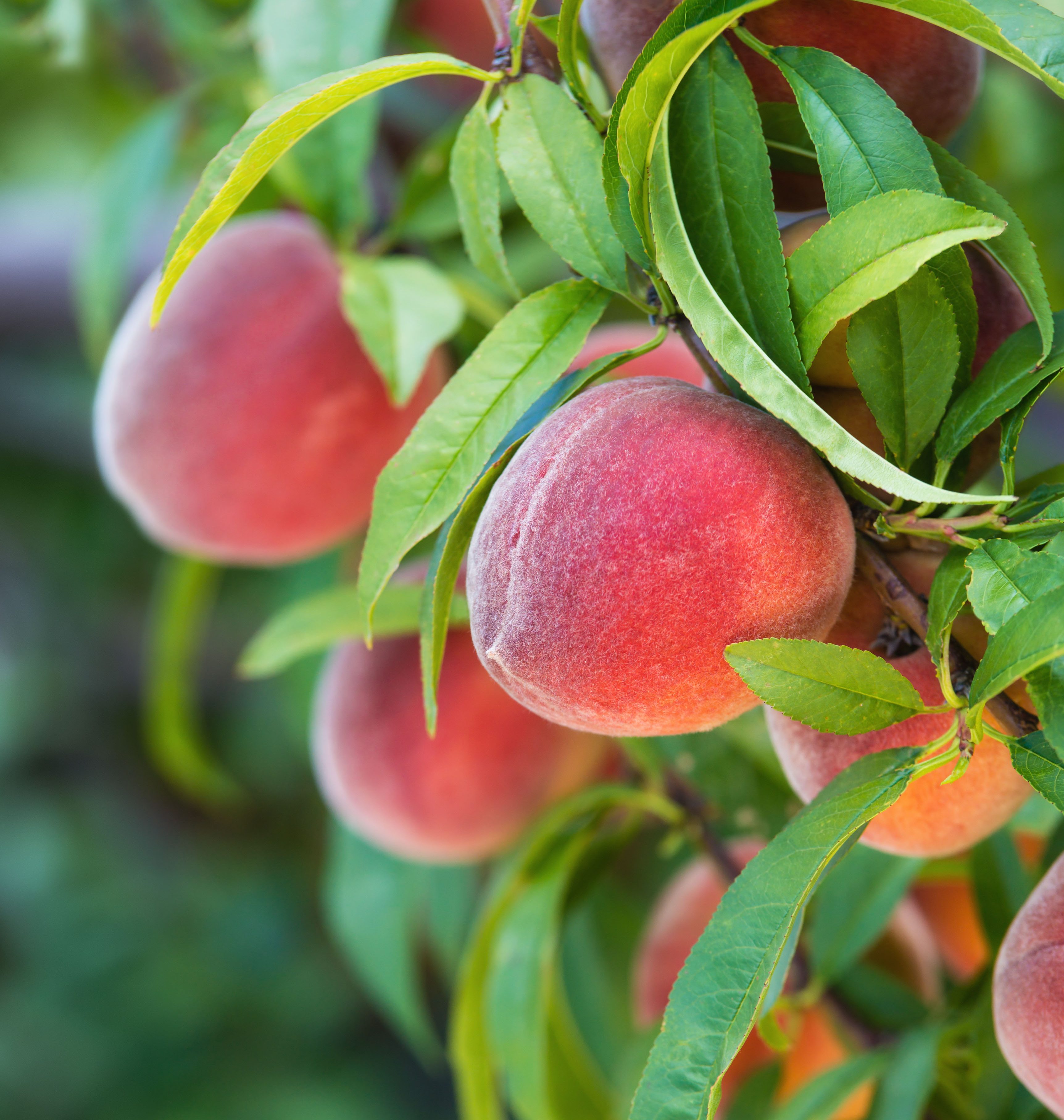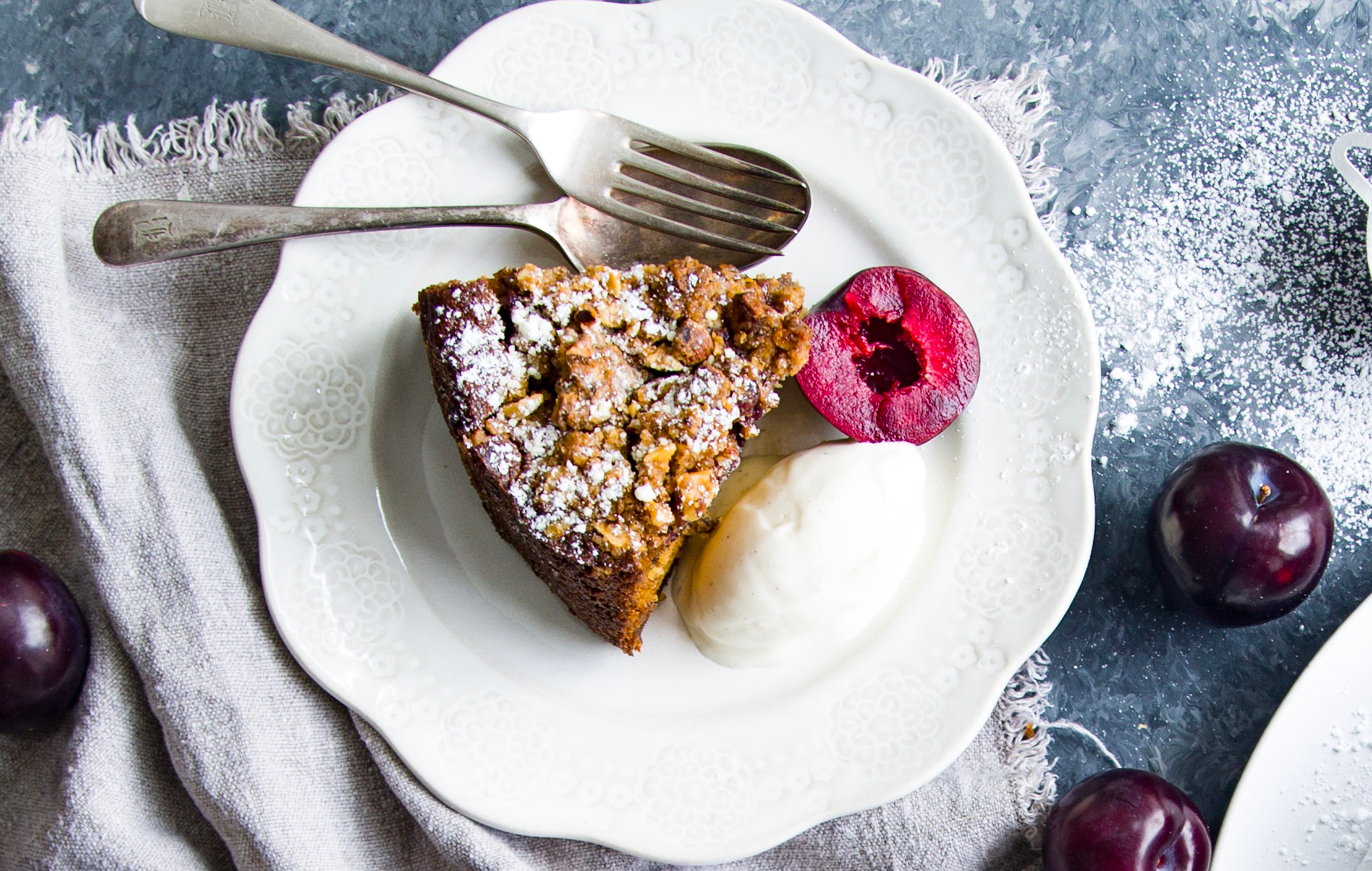Plums to grow, plums to show, and plums to pop in your gin
Mark Diacono picks his favourite plums — and their close relatives, damsons, mirabelles, bullaces and gages.


Every time I eat a plum, I look at the stone and marvel. Its markings are unique to its variety and I have no idea why — surely, there can’t be a reason? — but I love that they carry a fruity fingerprint.
When the Mary Rose, Henry VIII’s flagship, was raised after half a millennium submerged, we were able to confirm that there had been more than 100 varieties of plum on board. One hundred! How the Tudors must have valued their diversity of flavour and texture.
Although only a few dozen varieties are widely available these days, there is still quite a wealth of knowledge to discover about plums and their close relatives.
The distinction between plums, damsons, mirabelles, bullaces and gages is as discombobulating as that of squash, gourds and pumpkins: the lines between may as well have been drawn with a weak highlighter. In the end, all that truly matters is flavour and aesthetics, so rather than being fixated on horticultural distinctions, I prefer to think of how I intend to use them.
I cook most of my plums and gages (Prunus domestica) for breakfast, gently stewing them with star anise and a slosh of water. The two varieties of plum that have been most productive for me in Devon are the Dittisham and the ever-reliable Victoria. I know the latter is cursed somewhat by its ubiquity, but its self-fertility, productivity and dependability — and, let’s be fair, really good flavour and texture — make it hard to knock.
Gages, sweet, usually green and more spherical than other plums, are thought to have been brought to the UK from France in the 18th century. Early Transparent and Oullins are my favourites, but they are all good in my experience.
'If you held my last bottle of damson gin threateningly over a stone floor and made me choose my favourite plum/plum-alike, I’d go with Japanese plums'
Shamefully, almost all my damsons and bullaces — both Prunus insititia — tend to find their way into booze. Both are usually smaller than plums and gages, yet full of flavour and on the tart side, perfect for either a gin or vodka infusion. (Halve, stone and leave to infuse for as long as you can bear, adding a little sugar if you like.)
Sign up for the Country Life Newsletter
Exquisite houses, the beauty of Nature, and how to get the most from your life, straight to your inbox.
If I get a real glut, damson jam is one of the few sweet preserves I eat in any volume. Merryweather — a large-fruited, heavy-cropping, late-ripening, self-fertile damson — is perfect for this, and excellent in crumbles and so on, too. Bullaces are often very small and I’ve never been able to distinguish any difference in flavour between varieties.
For reasons unknown and incomprehensible, mirabelles — also known as cherry plums — are widely grown in France, but are comparatively rare in this country. Arriving at a friend’s house near Saint-Émilion last July, I was greeted by 42°C and the sight of a large mirabelle tree (Prunus cerasifera) in the garden, bowed with fruit. It made my fortnight.
Mirabelles are smallish, somewhere between a plum and an apricot in flavour and texture, richly sweet, juicy and with a hint of sharpness. We made clafoutis, roasted them with fennel seeds, a little brown sugar and a few drops of vinegar to have cold with the local yoghurt and ate them straight from the tree. For a few moments, I felt three-quarters French.
I have no idea of the variety in my friend’s garden, but the yellow-fruited Golden Sphere and the red Gypsy — both partly self-fertile — and the self-fertile Mirabelle de Nancy are the best I’ve tried on this side of the Channel for flavour and reliability. As a thank you to my friends, I am sending a pair of Japanese plums (Prunus salicina) to add to their garden.

If you held my last bottle of damson gin threateningly over a stone floor and made me choose my favourite plum/plum-alike, I’d go with Japanese plums. A decade ago, I planted an orchard of them and they have given me as much pleasure as any tree I’ve planted. They are so gloriously floriferous, so desperate to shower you with their fruitfulness, that their energies are largely spent away from expanding, so they rarely grow above 6ft tall.
The fruit is large, meaty, sweet and succulent, with more than a hint of almondiness. I have never wanted to do anything with them other than demolish them one by one, fresh from the tree. Most varieties are at least partially self-fertile: Methley, with its red-purple fruit, and yellow-fruited Shiro are outstanding.

Credit: Leena Robinson / Alamy
How to grow your own peaches: Five steps to peachy perfection
Steven Desmond explains how you can produce these delicious, luxurious fruits on your own soil.

Credit: Melanie Johnson
A dessert that's part crumble, part cake: Melanie Johnson's plum and ricotta crumble cake
'Late summer brings sweet and juicy plums,' says Melanie Johnson. 'And, this year, I have a glut.' That sounds like the
Mark is lucky enough to spend most of his time eating, growing, writing and talking about food. He has written fourteen award-winning books, including A Year at Otter Farm and A Taste of the Unexpected (both won Food Book of the Year, and Garden Book of the Year). Known for growing everything from Szechuan pepper to pecans to Asian pears, Mark's refreshing approach to growing and eating has done much to inspire a new generation to grow some of what they eat. He was involved in the early days of River Cottage, appearing in the TV series, and writing four River Cottage books. Mark writes to a global audience on his best-selling Substack: Mark Diacono’s Abundance.
-
 Designer's Room: A solid oak French kitchen that's been cleverly engineered to last
Designer's Room: A solid oak French kitchen that's been cleverly engineered to lastKitchen and joinery specialist Artichoke had several clever tricks to deal with the fact that natural wood expands and contracts.
By Amelia Thorpe
-
 Chocolate eggs, bunnies and the Resurrection: Country Life Quiz of the Day, April 18, 2025
Chocolate eggs, bunnies and the Resurrection: Country Life Quiz of the Day, April 18, 2025Friday's quiz is an Easter special.
By James Fisher